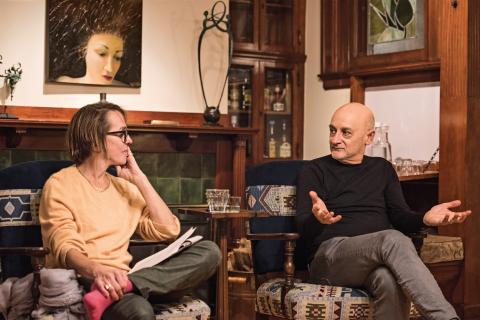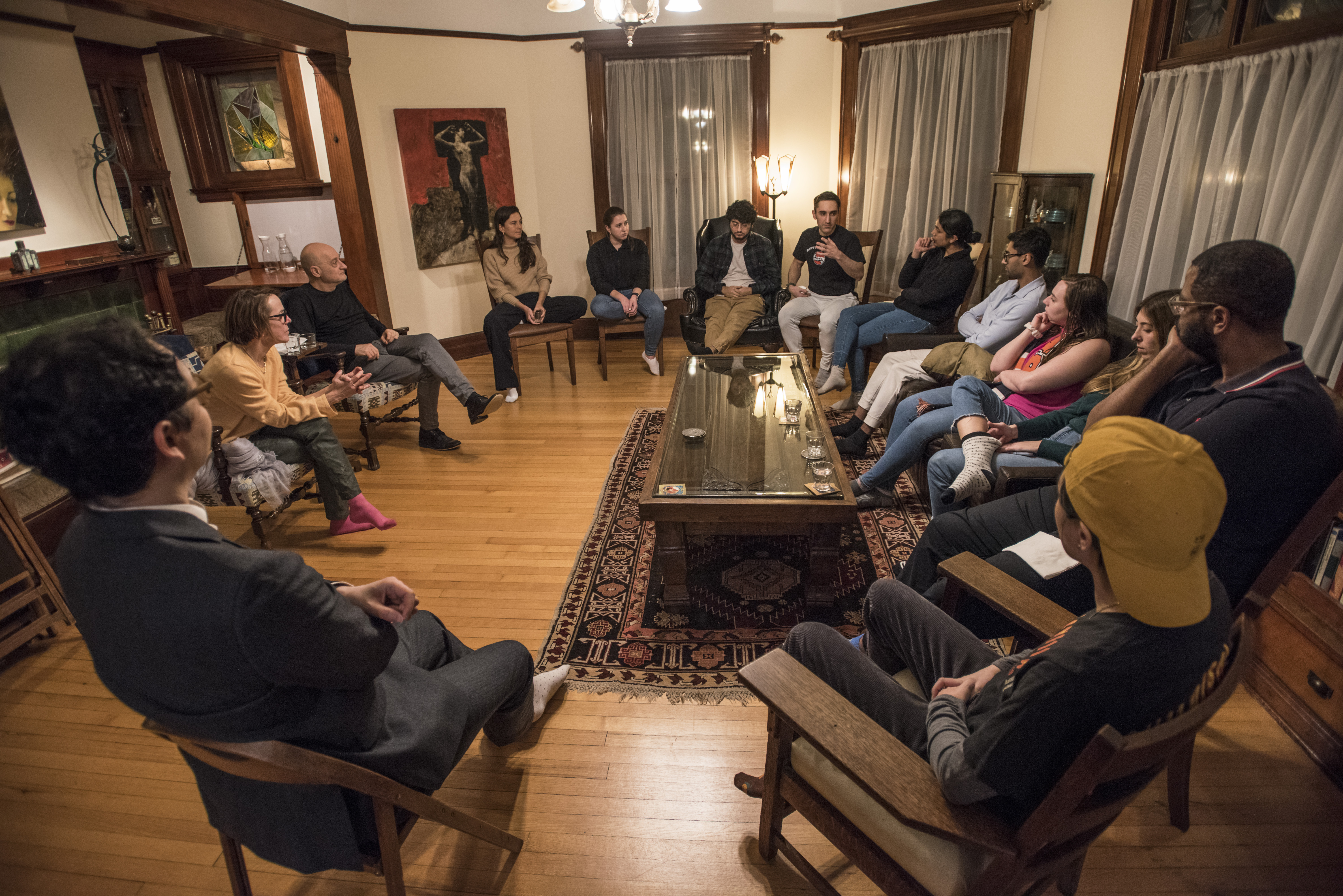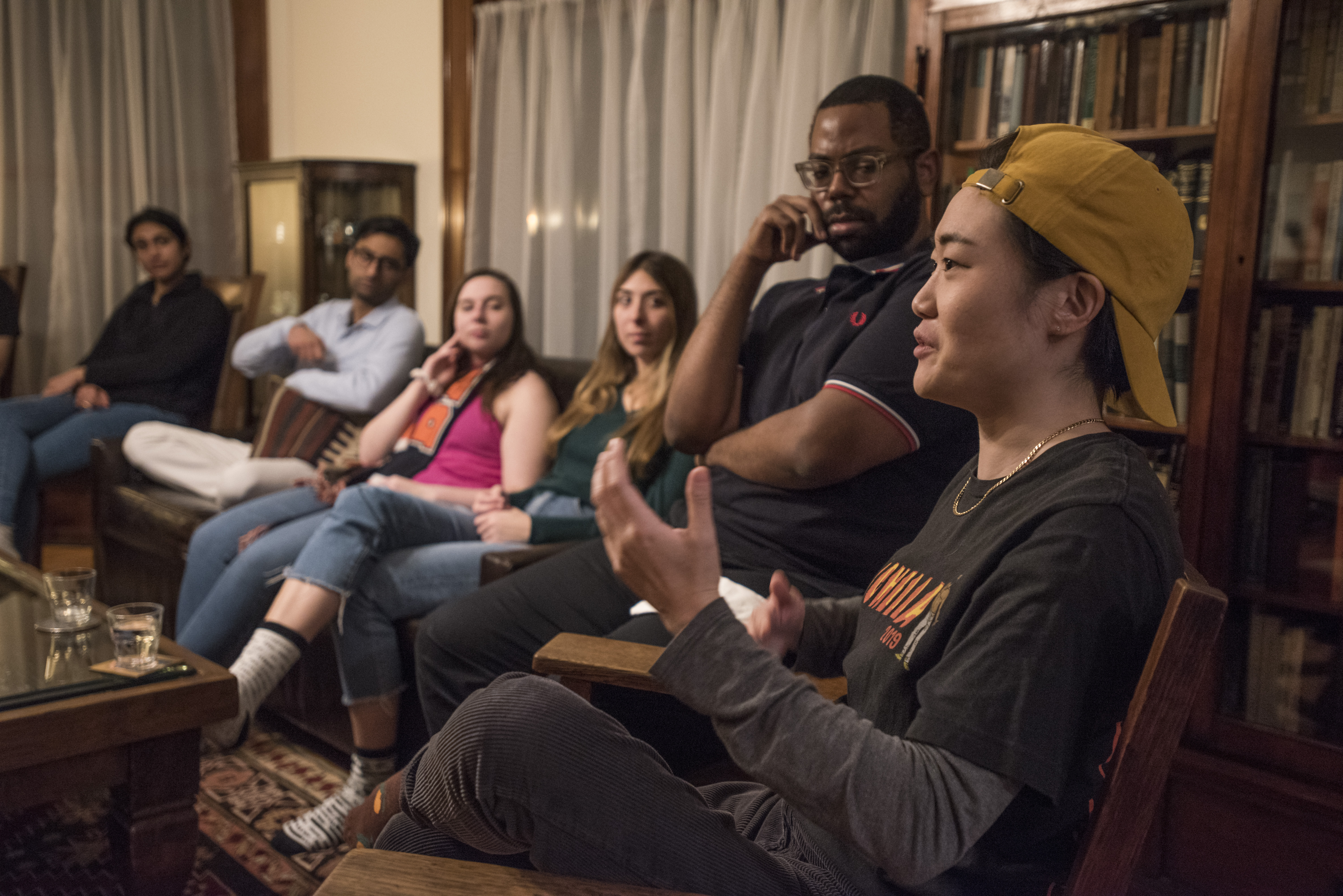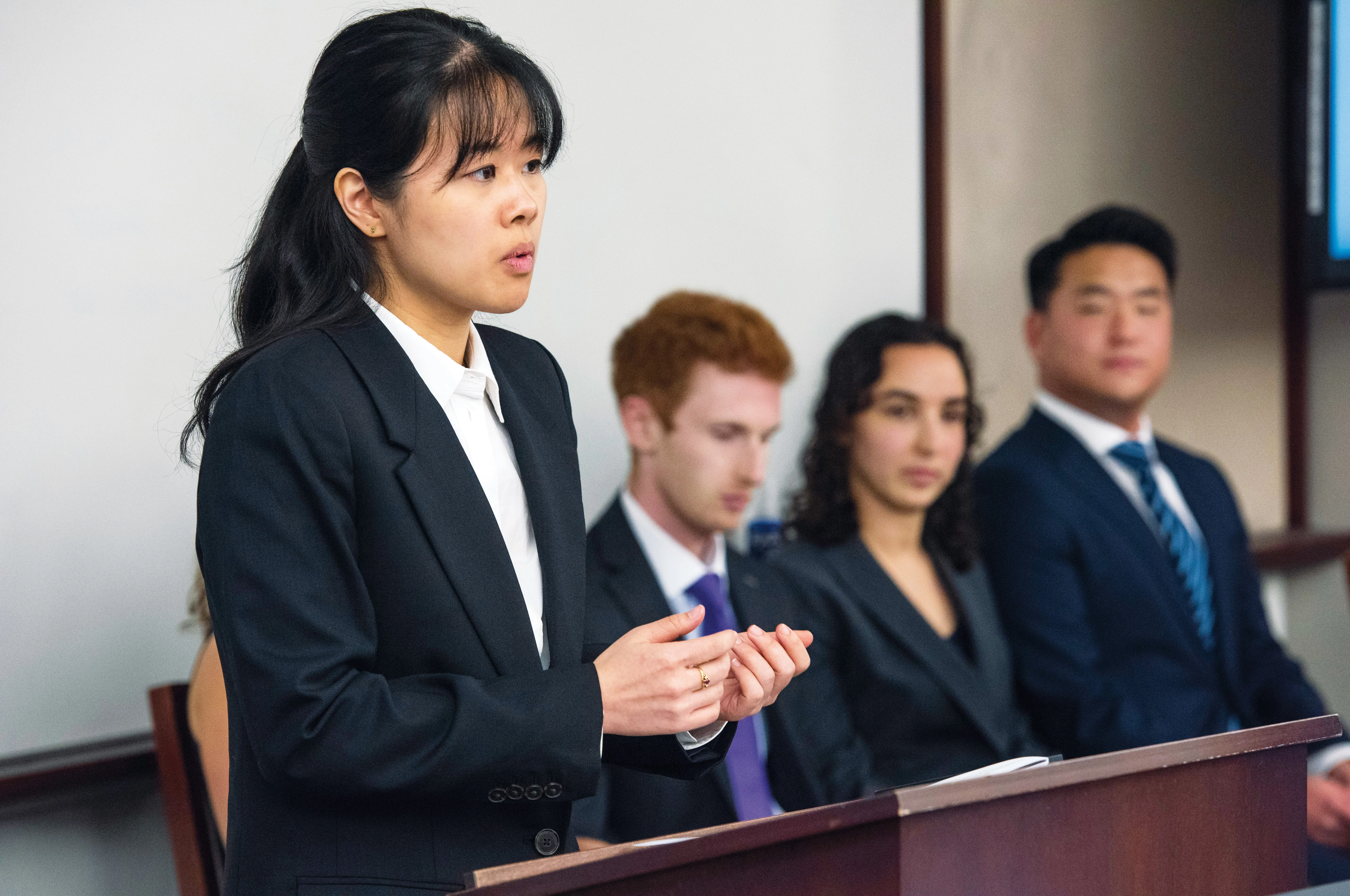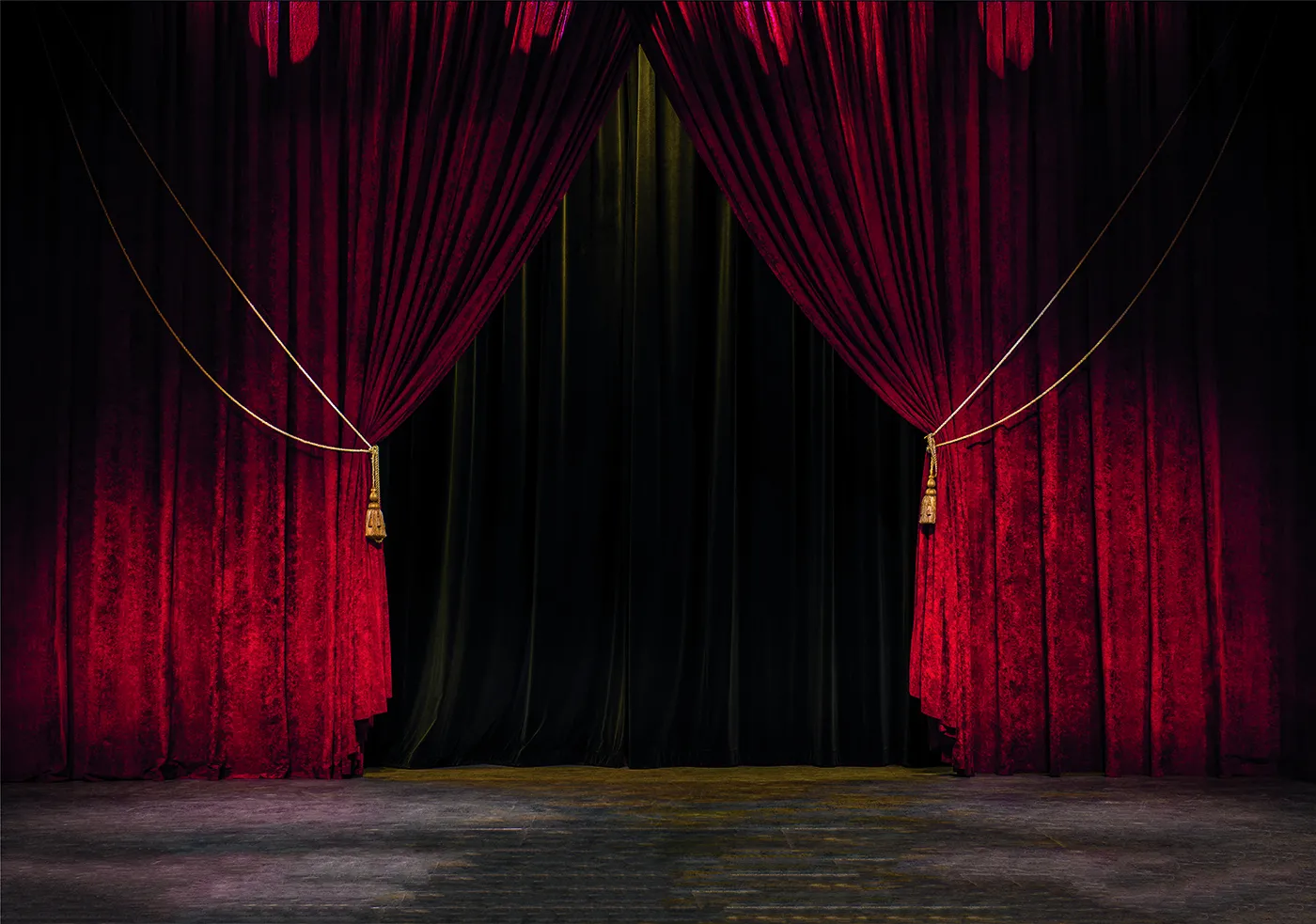Art and the Law
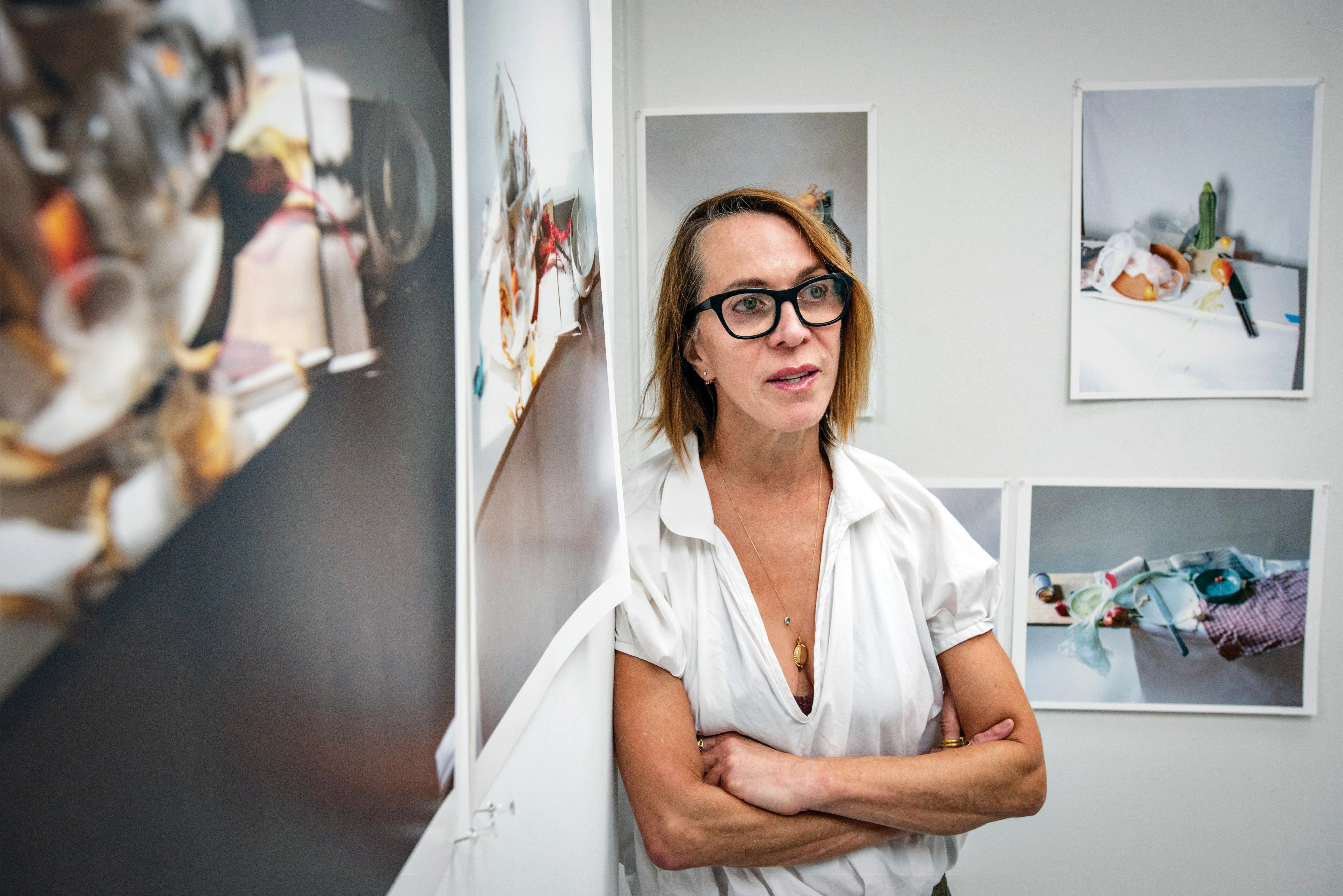
When she was a young girl, Jane Ninivaggi, ’23, assumed that most lawyers were artists. Her mother was a painter who also practiced law. It wasn’t until much later that she learned there was a tension between the way artists create and the way lawyers think.
Connecting to the art world through her mom and the recent advances of technology and political expression are reasons Ninivaggi was excited to take the Greenberg seminar “The Ethics of Aesthetics: Examining the Interactions Between Law and Visual Arts” last fall.
The seminar was jointly taught by Omri Ben-Shahar, the Leo and Eileen Herzel Professor of Law, and Laura Letinsky, a visual artist and a UChicago professor in the Department of Visual Arts. It was the first time the professors had taught a law class together.
Greenberg seminars have been offered at the Law School since the fall of 2004 when Dan Greenberg, ’65, and his wife, Susan Steinhauser, funded them. Twelve students usually meet with two professors in an informal environment—not a classroom—to talk about how law affects real life and society. The seminars are for third-year students; they receive one credit and take no tests. They don’t have to write a paper, but attendance is required. The five sessions take place at the professors’ homes, and each gathering includes food.
The art and the law seminar came soon after the release of DALL-E, artificial intelligence software that generates images based on text, and the US Supreme Court arguments in Warhol Foundation v. Goldsmith. DALL-E and the Supreme Court case were generating a lot of buzz around the ethics of appropriation at a time when clashes were happening between free expression and being politically correct.
“I was hoping students would openly discuss controversial issues such as the restitution of cultural and artistic artifacts, and a bit worried that they would monolithically think that such ethical duty exists,” Ben-Shahar said. “I was surprised to see how open and comfortable they were to debate this issue.”
There was a commitment to the flow of ideas throughout the discussions, which is a traditional strength of UChicago. But according to Ben-Shahar, we are going through times when this cannot be taken for granted.
Meanwhile, Letinsky noticed that while the law students seemed less aware than her traditional art students about the political role that art can play, they were sharper in other ways because they brought their lawyer lenses to talk deeply about the issues.
“Forty years ago, when I was a student, creating art was about unsettling the status quo. Today, given social media and recent political developments, the climate is such that students seem to want to create a culture of caring and safe spaces,” Letinsky said. “I have worried that there is a different zeitgeist in which students worry too much about not offending anyone.”
“I was hoping students would openly discuss controversial issues such as the restitution of cultural and artistic artifacts, and a bit worried that they would monolithically think that such ethical duty exists. I was surprised to see how open and comfortable they were to debate this issue.”
Omri Ben-Shahar
Letinsky said that when the seminar started, only a few students understood that contemporary art could be used to challenge ideas like consumer culture, but as the weeks went on, their ideas evolved.
“By the end of the course, after we introduced them to artists whose goal is to rouse conversation, many more were aware of how art can provoke, cajole, irritate, and annoy.”
When Art Meets Law
Rhemé Sloan, ’23, another student in the seminar, has been part of the art world all their life. They are a classically trained opera singer and, like Ninivaggi, was influenced by their mother’s love for art.
“My mom collected New Orleans Jazz and Heritage Festival posters, which we hung on our walls. I think this attracted me to visual arts,” Sloan said. “In 2014 when Michael Brown was killed, I wanted to figure out how artists were engaging with the really big moments of cultural reckoning.”
Sloan loves conceptual and research-based artwork from the African diaspora. They also appreciate works by Latinx artists and indigenous artists.
“Most of us learn to respect art forms as cultural objects, but we also need to push art forward and reinvent it to reach new audiences,” Sloan said.
Sloan has taken other classes about art while at the Law School: an art history class at the College, and an independent study on social sculpture with Professor of Law Farah Peterson, who is also a legal historian.
In the Greenberg seminar, they were particularly drawn to the work of Santiago Sierra who uses human subjects, including immigrants and sex workers, in his art practice.
“In the seminar, we talked about how human labor in art can be exploitative,” Sloan said. “And the legal system can breed and support gallery and institutional spaces in ways that uphold exploitation.”
Both Sloan and Ninivaggi found that Letinsky added an important dimension to what they learned because of her perspective as an artist. They knew, for instance, that as a photographer, Letinsky was interested in big questions around authenticity, like how to differentiate original works from photos of that work. She pushed them to think beyond legal doctrine.
“It probably wasn’t easy for her to teach law students who were focused on dogma like copyright law. But she taught us to think about how artists build from each other’s works to comment on our history and people before us,” Sloan said.
One of the bigger takeaways for Sloan was considering the role institutions play in shaping what becomes recognized as art.
“In law school, we are taught to revere judges. The idea of reverence is instilled into our legal education,” Sloan said. “This same idea of institutional reverence bubbled up throughout the seminar. We talked about how reverence can backfire.”
“In the art world, galleries have a heavy hand in creating artists’ careers, how work gets displayed, who gets to see it,” Sloan said. “Questions about whether to revere powerful institutions are happening in the art world—maybe not at a level that will shift anything soon—but they are happening like they are in the legal world.”
Ninivaggi found another way to think about how art and law intersect. She said when her mom was in law school, she was able to connect her right and left brain in her work and did not think of the two things as distinct. This inspired Ninivaggi to think about how art can operate outside of traditional transactions.
Ninivaggi also recognizes that lawyers tend to want to categorize things. This in turn creates conflict because categorizing can undermine the point of what the artist
is expressing.
“Art is much more than how we transact business and how we regulate or don’t regulate the field,” Ninivaggi said. “The idea and message are more important than the actual medium.”
While lawyers think about consumer protection, copyright, and contracts, artists are trying to challenge boundaries, uncover tensions, and inspire different ways of thinking.
“The exact point of art is to push legal boundaries further and broader,” Ninivaggi said. “The professors and artists helped me see that the very fact that art can conflict with law is the point. Art can be less about an aesthetic and more about how we define creativity and originality.”
When Art and Law Meet AI
Ben-Shahar, like the students, came into the seminar as a consumer of art. He could talk about the economic and social implications of art in ways that were different from, and, according to him, far less nuanced than how Letinsky presented them.
“I love art, but I don’t deal with art theory or policy. While Laura Letinsky knew relatively little about the law, we thought we could combine our perspectives and select topics that were controversial and seductive,” Ben-Shahar said.
DALL-E 2 was one such topic. The AI software had just enhanced its website in the summer of 2022, so the students and professors prepared for one of the sessions by reading about how the algorithms drew from a database of art done by others. The program created beautiful things and went to the core of what Ben-Shahar wanted the class to explore: what the law should be and what kind of freedom people should have to create things.
“Together with the students we recognized that the process of creation builds on the efforts of others—but at the same time, there was something truly transformative about AI,” Ben-Shahar said.
Ben-Shahar felt anxious about the Supreme Court decision in Warhol, where seven of the nine justices found that an illustration Andy Warhol created of the musician Prince—based heavily upon an image by a photographer—infringed on the photographer’s copyright.
“The decision stumped me. That judges think they could determine which work of art is transformative or more important, wow! What transforms us are ideas behind art and the way they are seen by the audience,” Ben-Shahar said. “When Andy Warhol’s studio transforms an anonymous photo into a multi-million-dollar museum-worthy piece, which the art world views as entirely different from the original photo, it seems almost arrogant for a court to establish that this is merely a ‘copy.’”
“Whenever there’s a new technology, there’s anxiety,” Letinsky said. “When Photoshop was introduced, there was a lot of fear. But I don’t think of the photograph as being the truth. It’s related to the truth. But it is not the truth.” In her photographs, Letinsky tries to usurp this idea that photographs are the truth and uses her lens to create a sense that something is not quite right in terms of how you read the picture space.
In the end, the students and professors agreed they aren’t particularly worried about the advent of AI.
“I see AI as just another kind of programming to create desire,” Letinsky said. “It sets up scenes and narratives that seem possible but are not. I’m not scared of what it means for art. It’s a different medium like print making or color photography. Art is a way to see things differently. It is a way for humans to potentially understand one another and through this, to cooperate with one another.”
“I think there’s something incredibly human about art that can’t be translated into an algorithm,” Sloan said. “When I look at a painting, I love to see the artist’s hand. Unless we teach robots how to paint physically like artists, AI won’t replicate an artist’s fingerprints or paint strokes or the work of the chisel.”
